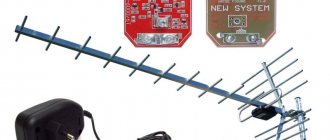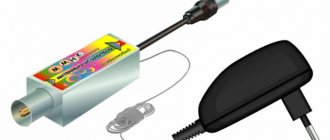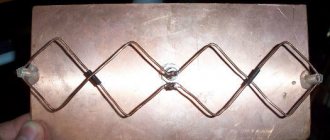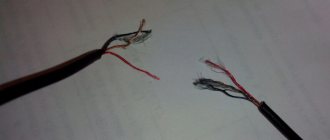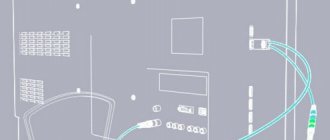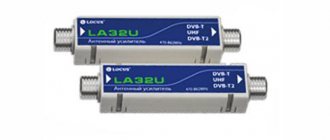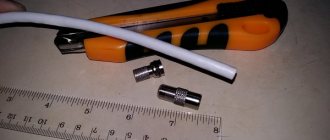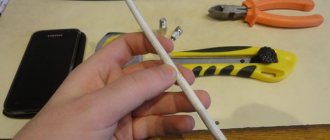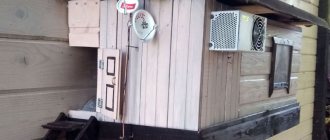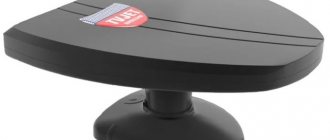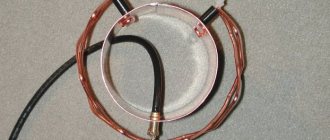Unlike terrestrial cable television, it is not received by an antenna from a television repeater, but is supplied by cable directly to the apartment. This method allows you to minimize signal loss and improve picture quality. Cable TV gives the operator the opportunity to independently regulate the number of channels, their format and encoding method. Cable TV provides subscribers with dozens and even hundreds of channels, both in analog and digital quality. Determining that you have cable TV is quite simple:
if your TV receives more than 20 channels, you are watching cable TV.
Typically, cable operators, to minimize financial losses, calculate the signal level as one TV per apartment. As a result, when wiring cables to several TVs, you have to resort to the help of an amplifier.
What are antennas like?
Depending on the type of receiving radio signal, the antenna can be digital or analog.
- Digital is designed to receive DVB-T2 signals, which transmit data in decimeter waves.
- Analogue is needed to display channels of the same name. Waves of meter length are transmitted, which means that the dimensions during manufacturing are kept appropriate.
Therefore, in order for a TV antenna to work well, you need to know the dimensions for manufacturing.
There are also broadband antennas. The conductors of the design are made of different lengths, which makes it possible to catch both the MV and UHF ranges at once. So, if you need to set up digital and analog TV channels at the same time, then you need to install an all-wave device.
Depending on the location of installation, they are divided into indoor (home, room) and outdoor (outdoor). Homemade digital indoor antennas, and even factory ones, can pick up channels only if the repeater is close. Moreover, the signal must reach the window where the structure receiving the signal is installed.
Outdoor ones are characterized by greater power, therefore they are better for use than indoor ones.
They are divided into individual and collective.
- Individual digital antennas are purchased separately by each resident of the house and installed outside independently or with the help of a specialist installer.
- Collective (or common house) ones are installed on the roof of apartment buildings. Provide signals to all residents at once. You cannot connect yourself and fix possible problems in the future. Maintenance is carried out by specialists from the company that installed the antenna.
The type of action can be:
- passive - they do not amplify the received signal, and the reception itself is ensured due to the design of the on-air receiver;
- active – in addition to reception, the signal is amplified. The receiver has an amplifier board, which is powered by an external power supply or digital set-top box via a coaxial cable.
By the way, if you bought a passive antenna, and the signal level on the TV or set-top box is not the highest, then you can make the design active. To do this, an external amplifier is connected to the cable television line indoors.
The best antenna amplifiers at a significant price
Terra HS 004
An expensive model, as it is able to amplify a wide variety of frequencies. The case is cast, quite reliable. It is wear-resistant and durable. Equipped with surge protection. It is very popular among walkie-talkie users. Works with UHF and VHF bands. Frequency availability range – 47 – 862 MHz. Adjustment of the indicator - from 34 to 44 dB.
It is powered from the mains using an ordinary plug inserted into a socket. The miniature size of the power supply allows it to be placed inside the case. The noise level is minimal, up to 6 dB. Able to function at any temperature, even at -20 degrees. Moisture protection is not provided. The case has a large number of holes to avoid overheating. Therefore, it is not possible to put the device outside.
The manufacturer has equipped the product with ears. The result is a product that can be mounted on a wall. This happens through bolts or screws. An indispensable thing for special services and other similar organizations. Can also be used for digital TV, since the ranges are the same.
The average price is 4320 rubles.
Terra HS 004
Advantages:
- the ability to attach to a wall or other vertical surface;
- the presence of division into ranges;
- protection;
- power supply is provided via RF input;
- a version is available that has an LTE signal suppression filter;
- quality of the cast body;
- there is a test connector at the output;
- DC overload indicator services;
- high gain;
- a significant number of connection points.
Flaws:
- overcharge.
Alcad AL – 400
The product belongs to the category of expensive ones. The housing is equipped with openings for ventilation. Not suitable for the street, especially in high humidity. The presence of rain and snow will lead to the formation of corrosion, after which subsequent operation will become futile. The manufacturer has provided four outputs in the model, which makes it possible to simultaneously connect four TVs. In this case, the signal divider is not used. There are no lugs for wall mounting, which is a clear disadvantage.
The weight of the structure is 580 grams. Differs in wear resistance and performance. We practically don't kill. The exception is a direct hit by an electric charge from lightning. It operates with two bands at a frequency of 40 – 318 MHz and 470 – 862 MHz. There is no splitting for quality increase. This device is not intended to operate with radio stations. The main purpose is to transform the TV signal. There is more than enough functionality for these purposes.
Gain indicator – 20 – 28 dB. The gain can be adjusted. The accessory is used regardless of the distance at which the tower is installed. The noise is at 4.2 dB. Return loss indicator is 10 dB. The product does not have cable frequencies, which makes it impossible to distribute the operator's signal to different TVs. The performance, as well as the duration of use, is excellent.
You can purchase the device at a price of 2,550 rubles per unit.
Alcad AL – 400
Advantages:
- long service life;
- gain is adjustable;
- many exits;
- the gain is significant;
- designed for digital TV antenna;
- supports a variety of frequencies;
- reduced noise level;
- ease of use;
- reliability;
- practicality.
Flaws:
- there is no overload indicator;
- not attached to a vertical surface;
- The cost is not affordable for everyone.
Wisi VM 8351
It stands out among its analogues with its interesting rounded body. Internal structural elements are located inside, behind white plastic. A small number of connectors are visible on the outside. In addition to the white plastic box, the kit includes a special metal product, which is equipped with a gain control and several sockets. Based on numerous reviews, the white component represents the power supply and separators, while the amplifier is a metal element.
There is a tiny indicator on the product that indicates that electricity is being supplied. If the product has become unusable, it will immediately become visible. The reliability of the design is excellent, so there is no need to worry. If the question arises which company is better to buy, then opt for this German model. The company guarantees the best price-quality ratio and conducts constant checks at all stages of product release so as not to let its fans down.
The device operates in the UHF range at a frequency of 470 – 790 MHz. It is on it that domestic digital television is broadcast. Gain adjustment varies from 15 to 35 dB. The noise figure does not reach 3.5 dB.
How much do products from a famous brand cost? Specialized retail outlets ask 2,750 rubles for it.
Wisi VM 8351
Advantages:
- possibility of gain adjustment;
- low noise;
- assembly reliability;
- quality;
- productivity;
- wear resistance;
- ease of use.
Flaws:
- The kit includes several accessories;
- gain control too small;
- Difficult to use by older people;
- small number of connectors;
- significant price.
Lans LX-50
The model has small overall dimensions. It cannot be used as a divider, since there is one inlet and outlet on the body. High-quality metal is used in the manufacture of the case. But it is not recommended to place it outside the premises. Raindrops can penetrate inside and negatively affect the performance of the structure.
Equipped with gain control. Can be used regardless of the remoteness of the telecentre. It is considered a universal accessory. The amplifier is a broadband type. Can support multiple bands simultaneously. Frequency processing occurs within the range of 47 – 862 MHz. With power supply via cable from a regular power supply of 220 V. If you decide to order equipment online in an online store, then make sure that the set includes a power supply.
The purchase price is 1600 rubles.
Lans LX-50
Advantages:
- practicality;
- functionality;
- durability;
- quality;
- assembly reliability;
- increased gain rate;
- support for a large number of frequencies;
- possibility of adjusting the gain;
- compactness.
Flaws:
- There are not as many connectors as we would like;
- only one F – exit;
- unspecified noise level.
How a digital antenna for a TV works: I’ll explain it simply
Before you start assembling any of the four models of receiving antennas, you should have a good understanding of the processes that should take place in them.
Electromagnetic waves propagate in all directions of the horizon from the electrical signal transmitter generator installed on the television tower.
They have sufficient power for their coverage area, but their signal weakens as distance increases. Its magnitude is also affected by the terrain, various electrical and magnetic obstacles, and the state of the atmosphere.
In a vibrator oriented perpendicular to the movement of the electromagnetic wave, voltage is induced according to the laws of induction. The positive and negative half-waves of the harmonic create their own sign.
The voltage reaches its maximum value - amplitude at points of time corresponding to ¼ and ¾ of the period or 90 and 270 degrees from the sinusoid of electromagnetic wave intensity.
Any shape and size of active vibrators are created for the most effective voltage induction with minimal energy loss. The position of these points is calculated using the wavelength or harmonic frequency.
The voltage, closed to the internal resistance of the television receiver, generates an electric current in the created circuit. Its shape and direction change and proportionally repeat the signals of the transmitter on the active load.
Due to the use of various types of digital modulation on the transmitter side, information signals are received and processed within the television receiver circuit.
I will not go further into considering the question of how a digital antenna for a TV works during its creation.
What technical characteristics of the antenna determine the quality of TV signal reception?
The antenna is classified as a reversible device because it works the same on the transmitter and receiver sides. When analyzing the characteristics, its inclusion is used as a generator.
To effectively receive a digital signal, it is necessary to take into account that on the generator side, the emitter of electromagnetic waves can be positioned at any angle to the horizon, but only two directions are legally accepted: horizontal and vertical.
Our task is to repeat this orientation for our own TV.
The direction of polarization and other digital signal transmission data can be found on the operator’s website through a search engine.
We go to the website and select the required information.
We are primarily interested in 3 characteristics:
- channel number and its frequency, for which we will create an antenna according to strict dimensions;
- the radius of the transmitter service area, which affects the signal quality and the choice of vibrator design;
- direction of polarization.
The distance the TV is located from the transmitting tower greatly affects the design of the antenna.
The higher the antenna is installed, the better the quality of the received signal, but the length of the cable can weaken it significantly. In this regard, residents of the upper floors of multi-story buildings have a significant advantage over their neighbors below.
For a reliable reception zone, I tested the simplest Kharchenko models and loop assemblies made of coaxial cable and wire, which have a wide range of reception frequencies.
For long distances it is better to assemble a wave channel or a log-periodic circuit. Of the simple designs, the Turkin antenna, modified by Polyakov, has proven itself well.
For example, in my area the distance from the TV tower was 25 km, which is within the zone of reliable reception, and the signal frequency is 626 MHz of vertical polarization.
I calculate the length of the electromagnetic wave through the speed of light by frequency: λ=300/626=0.48 meters. The half wave will be 24 cm, and the quarter wave will be 12.
Based on these characteristics, I made 4 test antennas for digital television with my own hands, which I describe below.
Basic criteria for choosing television signal amplifiers
The amplifier for the television antenna is selected according to the technical criteria of the device and in accordance with external factors (for example, the location and installation conditions). The most important thing is to take into account the characteristics that affect the quality of the television signal, for which they resort to the use of additional devices.
Operating frequency range
Three devices are associated with the frequency range: a television, an antenna and an amplifier. First of all, the antenna is selected. In this selection, it is necessary to take into account the superiority of narrow-beam over wide-range ones in terms of signal strength.
If the repeater is located close to the reception area, then an “all-wave” unit capable of covering a wider range is suitable. Receiving a signal from a remote television tower will be achievable using a device adapted to a limited frequency range (for example, MV or UHF).
The amplifier is selected in accordance with the frequency response of the antenna. If the range does not match, the existing device will not be able to function.
Noise figure
Using an amplifier, the TV signal-to-noise ratio should be adjusted upward. Taking into account the fact that when transmitting data, each device receives its own noise, as the signal increases, they also become more significant.
It is generally accepted that the value of the noise effect should not be more than 3 dB. Only under such conditions can we talk about guarantees of good quality TV signal transmission. However, newer devices may have a lower value of 2 dB.
Gain
The presence of the highest possible coefficient does not guarantee the best transmission quality. Moreover, with excessive amplification, the TV signal will be distorted with the opposite effect (clipping or overload).
To measure the parameter, dB is used, and its average values are:
- decimeter - from 30 to 40 dB;
- meter - 10 dB.
It follows from this that decimeter channels will have a coverage of 20 to 60 TV channels, and meter ones will have no more than 12. If the gain increases by 15-20 dB, we can talk about a good result.
When choosing an amplifier by coefficient, you need to base it on actual conditions and reception level. As a rule, the distance from the television tower (repeater) is taken into account. If the TV tower is located in direct line of sight, then purchasing an amplifier is not required.
Active or passive antenna
Antennas for receiving television signals can be passive and active:
- a passive antenna receives a signal only due to its own shape;
- for the active antenna , which increases the strength of the useful signal.
The active antenna must be provided with additional power from the network. As a rule, an amplification device is connected using a 9 or 12 V adapter. If the device is located outdoors, then you need to protect it from the rain. Be sure to take into account the information in the manufacturer's instructions warning about the possibility of interference if the device is not installed correctly.
A passive antenna can also be converted into an active one if an amplifier is added to it. This option may be more convenient than buying an antenna with a built-in amplification device - if the amplifier breaks down, it can be easily replaced. You can place it not next to the antenna itself, but in the attic or in a room, which will ensure a longer service life of the device.
DIY active antenna with amplifier for digital TV:
How to make an antenna for a TV
Below are step-by-step instructions to make a DVB-T2 antenna with your own hands. Attached are links to additional detailed instructions where you can learn more and see a more accurate creation algorithm.
From cable
The advantage is ease of manufacture. You don't need to be an experienced electrical engineer. You only need to mark the cable according to the exact dimensions and strip it with a knife. It is also used indoors, but can also be installed outside if the structure is well secured and exposed areas are protected from moisture (rain).
Disadvantage: There is no point in connecting an amplifier. There will be no effect from the device. It only catches a nearby strong signal, which arrives without interference to the antenna.
To make a digital receiver, you need to have:
- a cable of the required length (you can use an old cable from a previous television line if you plan to lay a new one);
- ruler;
- knife;
- plug for connecting to a TV connector.
Location and connection
Speaking about homemade devices, they do not need to be connected to the roof. It is enough to simply attach the “homemade product” to the window (on the wall of the house), pointing it towards the tower.
The TV antenna is connected via a TV cable, attached on one side to the TV, on the other - to the structure itself. Next you need to go to the settings section by clicking on the “auto settings” button.
TV antenna amplifier - what is it?
If you look at it, a TV antenna amplifier is not a very complicated device. This is a simple microcircuit designed for a power supply of six to twelve volts. Sometimes it doesn't even need an internet connection. Question: what causes the signal to be amplified? We will understand this without using complex terms and definitions.
The signal enters the transformer from the antenna and is then sent to the transistor. In a transistor, the TV signal is amplified, and only slightly. Then its path lies through the emitter. Then, using cascade transistors, the frequency is adjusted. This is a simple description of a complex thing at first glance. After this, the signal is sent to the TV.
Is it possible to receive a digital signal without an amplifier?
The question often arises and interests many people.
Important! With the proper approach, it is possible to receive a TV signal with normal quality, not only without an amplifying device. At a distance of up to fifteen kilometers from the repeater, it is possible to view the TV receiver even if you do not use an antenna. The antenna can be replaced with a short piece of wire. Coaxial cable is best for this.
What factors influence the deterioration of a TV signal?
Before studying radio engineering innovations, it is necessary to analyze why the level of functioning of the receiver is low. Causes of noise and poor image quality may include:
- significant distance of the home from the repeater;
- incorrect choice of television antenna;
- high level of natural noise;
- external obstacles to signal reception: high-rise buildings, trees, industrial buildings;
- cable failure;
- incorrect orientation of the transmitter;
- the presence of metal objects near the antenna that can conduct electricity;
- distribution of a television signal to several receivers;
- outdated technology.
Features and circuit of the antenna amplifier
An amplifier is a device designed to amplify a poor, unstable TV antenna signal. The advantages of this device are as follows:
- amplification of a television signal in a fairly wide frequency band;
- the ability to receive even a very weak TV signal;
- quiet operation
The disadvantages include:
- the risk that the device will self-excite;
- High power signals in the meter wave range may overload the device;
- susceptibility to the effects of lightning currents;
- passive output losses.
The DIY antenna amplifier diagrams indicate how the device should be connected to the TV. The TV cable goes to a device that amplifies the signal, and then the signal goes to the TV. This scheme is universal.
Features of using antenna devices
An excellent solution for residents of a summer house or country cottage is to install an active television antenna or a separate amplifier. In this case, various options for connecting the device and amplifying the TV signal are possible.
Antenna amplifiers of the “SWA” and “LSA” types, depending on the model, have different gains and are mounted on the antenna array (such antennas are called “Polish”). They operate in the frequency range 49.0...790.0 megahertz and require a supply voltage of 9.0 volts. The device is fixed to the antenna array using a hairpin, threaded connection.
The cost of an individual device depends on the model and ranges from 200.0...40.0 rubles, the price of a repair amplifier does not exceed 250.0 rubles.
Active antennas “Locus” (“Locus”) use devices of the “L” model line. These devices can be purchased separately to modify passive antennas or to replace an existing, failed amplifier. The advantages of the “L” models are ease of installation, which does not require complex radio engineering work. To connect the antenna cable, there is a special terminal clamp that ensures reliable contact with both the cable braid and the central signal core.
Active antenna price:
- 700.0 rubles for the meter range.
- 1200.0 rubles for receiving TV programs in the UHF range.
- 1700.0 rubles - combined, - allowing reception and amplification of the signal in the meter and decimeter ranges of television broadcasting.
Amplifiers “Terra” (Lithuania) are available in two versions:
- Devices of the MA series allow you to amplify the signal coming from several antennas.
- Various models of the HS series have multiple outputs and the ability to adjust the gain level in different frequency ranges.
Both models have input and output overload protection. The disadvantages of these devices are the high price (over 1500.0...5500.0 rubles) and increased supply voltage (12.0 volts).
The principle of operation of a TV antenna
Intermittent broadcasting distorts the picture and sound, but the problem is not always on the side of the television tower. The problem most often lies in the receiving device. You can try to amplify a weak signal to avoid noise and interference during viewing. Let's consider both types:
- Satellite dish - the gain depends on how wide the dish is in diameter. There are several varieties, all of them outdoor.
- Television can be indoor or outdoor (these are installed on the roofs of houses).
The quality of the signal in the second case depends on the proximity of the broadcast tower, the design and the presence of an amplifier. In other words, the antenna receives it, converts it through the receiver, and the image appears on the TV screen.
IMPORTANT! The quality of the signal does not depend on the type of television cable (if it is damaged, there will be no sound or picture at all). Therefore, if you have problems with broadcast reception, you should check the antenna.
How to choose a signal amplifier for your TV
The modern market presents many different models, for this reason, many people find it difficult to decide which device suits them best. To make the right choice, you should consider several important parameters:
- Gain. It should be calculated based on the approximate distance between the TV and the signal source (tower). It should not exceed 150 km. At a distance of no more than 10 km, there is no need to amplify the signal; you just need to choose a suitable antenna. If the distance between your home and the source is more than 10 km, you should not purchase a device with a coefficient higher than necessary - this will lead to the opposite effect and instead of a high-quality image you will see new interference.
- Antenna type. For example, swa models are suitable for array receivers, which operate in the frequency range from 49 to 790 MHz. Some of the most popular modern Locus models are perfectly compatible with LSA amplifiers.
- Frequency range. A good solution for a conventional outdoor receiver (which receives waves of any frequency) would be to install a broadband model, but a better result is shown by a device that operates only in a certain range.
- Noise figure. The lower this parameter, the better the image on the TV screen will be.
Features of choice
Everyone's selection criteria are different. But the purpose of the acquisition is one - to make the received signal high-quality. If you ignore this, then interference cannot be avoided. Advice on choosing from experts boils down to the following: if you decide to purchase an inexpensive home amplifier, then you can’t expect more from it than passive participation. This is facilitated by the presence of metal structural elements.
But there are options that this is quite enough if the TV tower is in close proximity. For residents of rural areas or for owners of country cottages, as well as for owners of apartments on the first floors of a high-rise building, you will need a device with a high gain.
What types of devices are there? Currently, specialized stores will offer a variety of products to choose from, including outdoor and indoor antennas with a built-in compact amplifier. Which one is better to buy depends on many factors. The best one will cost a lot of money, and there may be no need for it. The best manufacturers annually release a lot of popular models. What should you pay attention to to avoid making mistakes when choosing? Check out the following expert recommendations:
- It is worth keeping in mind that no amplifier will work without being connected to electricity. To get it, you need to have a 12, 9 or 5 V network adapter. Today, new products are being released that can use an antenna cable as a power supply. Then you should make sure that your own TV can transmit. Popular models also differ in body. Some models are designed exclusively for mounting to an outdoor antenna. Their body is waterproof. Otherwise, their lifespan is until the first rain. If you need to purchase an indoor model, you do not need to pay attention to this characteristic. Experts recommend installing the amplifier close to the TV. If you ignore this advice, the device will not only amplify the signal, but also attract noise.
- The main indicator of the models included in the rating of quality products is the gain factor. You need to understand that a high value is not always optimal. First you need to decide on the nearest television center. A digital coverage map will help you with this question. When the tower is located thousands of kilometers from the user’s location, it is worth thinking about the maximum increase rate. In other cases, there is no need for such acquisitions. This will only increase the noise. Modern devices already have a built-in regulator. This suggests that the owner is able to adjust the indicator based on the location of the tower. Even if you purchase a product with the option disabled, you won’t be able to get rid of it completely. Therefore, even if you purchase a “sophisticated” design, it is impossible to get rid of noise if the tower is close enough.
- The devices have a wide range of amplified frequencies. If you review the purchased models, preference is given to broadband options. They are also called universal, as they are able to amplify all possible frequencies. Due to the transition to digital TV, it is almost impossible to purchase this kind of product.
- When purchasing the most expensive TV amplifier, you can get additional functionality in the form of a signal divider. The case is equipped with several output connectors. This makes it possible to connect several TVs to the device at the same time. You can, of course, purchase separate dividers, which are abundant in any specialized store. But it is worth keeping in mind that these dividers contribute to signal deterioration. As for the amplifier, it has no such drawback, no matter how many TVs are connected to it.
How to strengthen a TV antenna yourself
There are three simple ways to boost your signal yourself. They do not require large expenses or specialized knowledge:
- Use an amplifier - you can purchase it in a store and install it yourself.
- Use connected devices - they will give the best signal. It is best to place them as high as possible.
- Expand reception coverage - as with a plate, diameter matters. You can supplement a conventional antenna with thin wire, making a housing around it with segments similar to the type of rays.
The antenna can simply be moved by finding the optimal place to receive the signal. Such amplification methods are universal and, quite likely, they will be enough to improve the picture on the TV screen.
Signal amplification methods
TV antenna signal amplification is achieved in 5 ways:
- Use a higher quality TV antenna than the one you have. Depending on the design, a few decibels of gain can be gained here. Check if your antenna is selected correctly.
- Precise orientation. Almost all devices operating in the UHF range have a clearly oriented diagram and most efficiently receive a signal from one direction. Even a rotation of 5–10 degrees can give a serious increase in signal strength.
- Replace cable. If the distance between the antenna and the television receiver is too large, the lion's share of the received signal power is lost due to the resistance of the conductor. This can be avoided by using a feeder with reduced resistance (for example, with a central core made of pure copper rather than copper-plated steel).
- Move the TV closer to the antenna. The cable becomes shorter: in some cases, even 2–3 meters can be decisive. Reducing the feeder length allows you to avoid unnecessary signal power losses.
- Use an antenna amplifier.
Do I need an amplifier?
Sometimes an amplifier is simply not needed. If you just brought the TV to your dacha or country house, it’s better to check right away whether it’s worth spending the money on. For such a check you will need the TV itself and a piece of any wire. The latter needs to be inserted into the antenna connector and its free end must be twisted in different directions, as if trying to tune it. These actions are absolutely safe.
If you manage to catch 2-3 channels with normal sound and a fairly tolerable image, you won’t need an amplifier. This means that the signal passes well in this area and a regular antenna will be quite sufficient.
Otherwise, you can't do without an amplifier.
Making a digital signal amplifier: materials, tools, circuits
Any novice radio amateur who has just learned to hold a soldering iron can make an antenna amplifier for receiving digital television. The main thing is to choose the scheme you like from the many that can be found on the Internet. You will need a minimum of tools - a soldering iron, a cutter and pliers. Well, all the necessary material, such as circuit elements, wires and other consumables, can be purchased at any radio electronics store or even ordered online.
Connecting and setting up an antenna amplifier to a TV: how to do it
If the circuit is assembled correctly and the elements are correctly selected, there is no question of any adjustment. A cable TV signal amplifier between a splitter (diplexer, splitter, tee - whichever is more convenient) and a TV. If you need to supply power to it, you should consider having a source nearby. Moreover, if power is supplied to the device, then, if desired, such an active antenna can easily be turned into a passive one by simply unplugging the unit from the outlet.
Do-it-yourself amplifying device: advantages and disadvantages
Important! It is much easier to buy digital television signal amplifiers online from Chinese manufacturers. Such a device is cheap, and its delivery will be free.
Only such things can encourage you to start making an amplifier yourself - this is the desire to make something of better quality, as well as improve your amateur radio skills. You won't be able to achieve big savings with this option.
Important! If a radio amateur plans to receive a digital signal, then in this case the receiver must be equipped with a “DVB-T2” digital tuner. Otherwise, you will have to purchase an additional receiver for your TV, with which you will be able to watch TV channels in the desired frequency range.
Reasons for signal deterioration
Before deciding to install an antenna amplifying device, you first need to figure out what is the reason for the poor-quality signal:
- The distance to the repeater is too large;
- Incorrect choice or orientation of the TV antenna;
- Presence of obstacles in the signal path: high-rise buildings, buildings, trees, etc.;
- Signal distribution to several receiving devices;
- Cable wear or outdated television equipment.
There is a possibility that you can improve the signal without an amplifier.
To do this you can do the following:
- Try changing the position of the antenna;
- Remove metal objects from the antenna and other objects that are in the signal path;
- Install a more powerful antenna;
- Check the cable for integrity.
If the antenna receives strong interference, or the reception level is greater than the amplifier can withstand, it is better to refuse to use it
It should be understood that the amplifier will increase not only the useful signal, but also interference, since it is not a filter. Therefore, if there is a problem with the signal being too noisy, you should first think about a different antenna. And if the TV signal is too weak, then it will not be amplified.
In addition, if there are twists in the connected cable, this will also increase the amount of noise. It is better to use soldering to connect structural elements.
Digital television is gaining momentum every year. This is due to greater resistance to interference and better quality of the transmitted image. But if the signal is insufficient, the broadcast will be interrupted. This problem is similarly solved by an amplifying device.
A digital TV signal amplifier is no different from any other. It is only important that he works in the DMV. Sometimes it is recommended to install such devices with a voltage of 5V so that they can be connected directly to the tuner. In this case, there is no need for a separate power supply.
TV signal amplifier: make it yourself or buy it
Many people ask this question. If we think from the point of view of justification, then it is easier to purchase a digital signal amplifier for a TV on any Chinese resource. The device is inexpensive and delivery is free. However, if you want to do everything yourself, you can purchase all the parts there, taking one of the schemes for execution. It won’t cost much less, but many people are simply interested in the radio business.
By the way, it is worth noting that if a home master wants his TV to receive a digital signal, then his TV must be equipped with a special DVB-T2 module. Otherwise, you will need to purchase a receiver for your TV that will allow you to view channels in the appropriate frequency range.
Features of the amplifier for various types of television
To understand that a specific user network will need an antenna amplifier even before its deployment, it is worth paying attention to the mechanics of the operation of different signal transmission principles.
Terrestrial television
Terrestrial television in the digital broadcast format DVB T2 is widely distributed. It is with the help of this technology that the transition to digital, declared as mandatory in Russia for all television programs, is being implemented.
The broadcast network is built as a cell structure. In the center of each of them there is a receiving and transmitting tower. She works as a repeater. The tower receives a signal from a base station or another tower, and it converts it to normalized parameters. After this, a broadcast is made to the coverage area, a figurative cell from the total network coverage area.
It is not so important how repeaters receive the original data. They can be transmitted over fiber optic cable lines or over a radio channel. The mechanics on the user side are important. It always receives a signal to the antenna for digital terrestrial television. His level:
- falls as it moves away from the broadcast tower;
- decreases in bad weather conditions in the form of fog, clouds, thunderstorms, etc.;
- falls in the absence of direct visibility to the translator, the presence of tree branches or large obstacles in the form of buildings or relief elements on the receiving line.
To receive the most intense terrestrial television signal possible, the user needs a high-quality antenna . But even its capabilities will not be enough under extremely poor reception conditions. Then you need a TV amplifier.
Advice! It is advisable to install it at the output of the antenna unit.
The user has two options. The amplifier can be mounted directly on the antenna by supplying power to it. This method has a number of key disadvantages. This is an effect on the amplifier of environmental factors, birds. The power cable may be damaged, and if the amplifier voltage is 220V, this leads to short circuits and breakdowns in the electrical network of the apartment or house.
The second installation option is indoors, on a section of line coming from the antenna. The method is applicable only for average signal quality, when interference, noise and attenuation of a short cable line at the amplifier input do not play a big role. When installed indoors, the device is maximally protected.
Cable TV
When connecting cable television in a house or apartment, the consumer receives the main thing: an entry point in the form of a wire, wound outside from the provider's distribution equipment. If installers approach their work responsibly, they will provide the subscriber with the highest possible signal level.
The difficulties begin inside the apartment. Today you rarely see a cable network for only one TV. Dividers and separate wire lines are used for several devices in different rooms. Moreover, the further the TV connection point is in the network hierarchy, the weaker the signal on it.
You can proceed using the following methods.
- Install one digital signal television amplifier directly at the entrance to the apartment. This option is suitable for a network of a pair or one TV. The amplifier will eliminate some of the shortcomings of the signal coming from the provider.
- Install separate amplifiers in problem areas. For example, after a divider at its output for a TV, on which there is a noticeable drop in picture and sound quality.
Important! It is worth understanding that a group of dividers not only reduces the signal level. Coupled with long cable lines, they add noise and noticeable distortion. And if the network in the apartment is replete with splitters, even good TV signal amplifiers will not provide maximum picture quality on a particular TV.
To solve this problem, a main amplifier with a group of outputs is designed . This device is installed at the entrance to the apartment. From its separate outputs a personal cable line is led to each of the TVs. The solution is very expensive, but it guarantees the best picture quality on all connected devices.
Satellite television
When using a satellite dish, you need to very carefully select a digital signal amplifier for your TV. Here the user is fully faced with the fact that a lot is not always good. Satellite TV tuners and receivers only work with a certain range of signal strength. The installed amplifier is capable of taking it beyond acceptable limits.
The rules for assessing the need for reinforcement are simple.
- If a properly configured antenna produces a signal at a level of 85-90% of the nominal, and on televisions within the cable network the indicators are sufficient for the equipment to operate, an amplifier is not needed. Today there are receivers and tuners capable of producing a high-quality picture with input values ranging from 50-70%.
- With a properly configured antenna and good signal output, a significant drop in its level can occur on long cable lines. In this case, there is no need to buy an expensive solution. A simple and clear passive TV signal amplifier will do. It plays a major role: it compensates for wave losses on long wire routes.
In all other cases, both to raise the signal level to the required optimum of the satellite receiver or tuner, and with low antenna output parameters, active amplifiers are used. The location of their installation is selected depending on the situation. For example, directly after a satellite dish or close to a receiver or TV with a tuner.
Making an antenna that doesn't need amplifiers
We must warn you right away - if the distance to the TV tower is more than 15 kilometers or there are a large number of obstacles in the path of the signal, then you cannot do without an amplifying device. If there are no problems described above, then the antenna can be made in about 10 minutes.
Step-by-step algorithm:
- The first thing you need to do is find out what channel the signal is broadcast on in the region. Open the link www.rtsr.ru and go to the RTRS web page. Then we indicate our current location.
- Scroll down and find the phone number by which the user can find out the broadcast channel.
- We enter the channel data in the appropriate field that will appear when the TV is switched to manual tuning mode. The frequency that will be needed to calculate the cable length will be displayed below.
- Then we take a calculator. To calculate, we use the following formula: 7500 divided by the frequency in MHz. We always round the result up.
- For example. Frequency in the Samara region is 754 MHz. Divide 7500 by 754 and get 9.9. This means that the cable length must be 10 centimeters.
- Initially, there is no need to shorten the cable. We install a simple television connector on it, which is connected through a coupling to the cable.
- Next we take measurements. We retreat 20 mm from the plug. There will be a bend at this point. This is where you should measure the required length. In our case it will be 12 cm (2+10=12). Next, the cable is cut at the outermost mark.
- Then remove the insulating layer from the 20 mm mark. to end. This is very easy - modern cables have a very soft outer layer.
- Afterwards we remove the shielding layer. We don't need him at all.
- At the 20 mm mark. The cable is bent at an angle of thirty degrees. After this, the antenna is ready for use.
- We position the antenna so that it is directed towards the TV tower. There is no need to hang it outside the room. In the room the signal, although lower, will be quite sufficient for normal reception.
To summarize all of the above. Without an amplifying device, you can make a TV antenna yourself. In this case, such an antenna will function at the level of the factory analogue.
We make a universal amplifying device
Amplifier parameters:
- Frequency ranges: 50 MHz - 4000 MHz;
- Gain: 22.8 dB - 144 MHz, 20.5 dB - 432 MHz, 12.1 dB - 1296 MHz;
- NR: 0.6 dB - 144 MHz, 0.65 dB - 432 MHz, 0.8 dB - 1296 MHz;
- Electrical current consumption is approximately 25 mA.
Amplifier circuit:
To make an amplifier you will need an RFMD SPF5043Z circuit. You can buy it on AliExpress.
Below is an example of an amplification device board.
Foil-coated PCB is suitable for making the board. Etching the latter can be omitted
A rectangular hole with dimensions of about 0.15×0.20 cm is cut out in a double-sided foil PCB.
Next, using a metal marker, outline the wiring itself in size.
Then the tracks can be etched or mechanically cut.
Then we tin everything using a soldering iron and solder SMD components, size 0603. To shield the substrate, we short the foil on the bottom side of the board to a common cable.
You don't need to make any settings. Alternatively, you can measure the input voltage, which should be approximately 3.3 volts, and the current ≈ 25 mA. When working with a range greater than 1 GHz, it may be necessary to match the input circuit. To do this, you will have to reduce the capacitor to 9 pF. Next you need to connect the board to the TV antenna.
Connects the board to the antenna. Checking the board confirms normal gain and low noise levels.
It is recommended to place the board in a shielded case, as shown below.
The finished board for the amplifying device is sold on AliExpress. But its main disadvantage is that the cost is much higher than that of a homemade one. Therefore, it is better to spend time and make it yourself.
The circuit is powered by a voltage of 3.3 volts. This option is not very convenient, for example, when using an amplifier in a car whose on-board network is 12 volts.
The stabilizer in the circuit allows you to solve this problem.
The amplifying device should be located as close as possible to the antenna.
A loop or frame vibrator will help protect your device from static electricity and thunderstorms.
DIY photo antenna for digital TV
Sources
- https://gidpotv.ru/antenna-dl-tsifrovogo-tv-svoimi-rukami.html
- https://ElectrikBlog.ru/antenny-dlya-cifrovogo-tv-dvb-t2/
- https://PoTelevizoram.ru/efirnoe/antenna/dlya-tsifrovogo-tv-svoimi-rukami
- https://seeiptv.ru/6-sposobov-sdelat-komnatnuyu-antennu-dlya-televizora-svoimi-rukami/
- https://VashUmnyiDom.ru/svyaz/usilitel-dlya-antenny.html
- https://tytmaster.ru/antennyj-usilitel-svoimi-rukami/
- https://gorkogo29.ru/vyshivka-i-shite/kak-usilit-antennu-dlya-televizora-svoimi-rukami.html
- https://encom74.ru/izgotovlenie-usilitela-signala-televizionnyh-antenn-ulucsenie-priema-svoimi-rukami/
- https://homius.ru/usilitel-tv-signala-svoimi-rukami.html
- https://svoimirykami.guru/antenna-dlya-cifrovogo-tv-svoimi-rukami/
